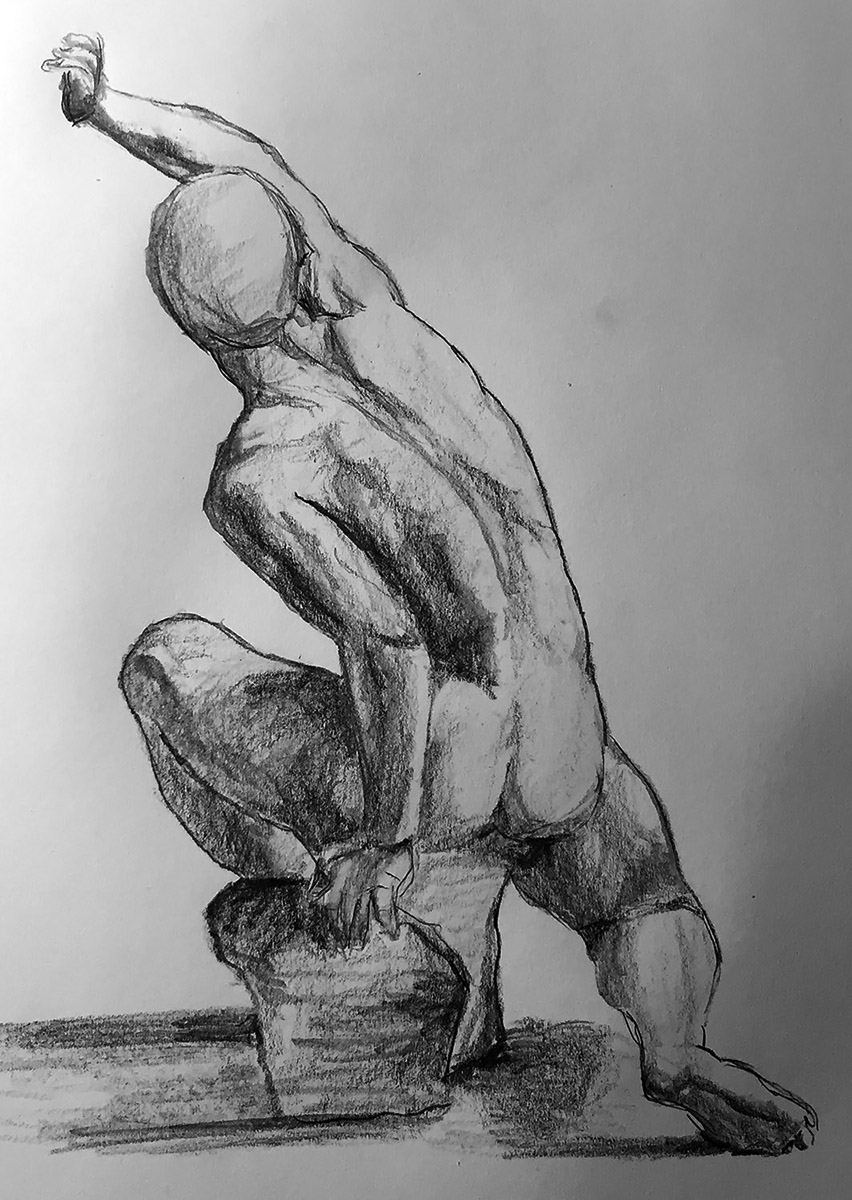
The graphite drawing above is a copy of a work done in black chalk by Raffaello Sanzio da Urbino or if you prefer just Raphael. I feel sorry for anyone else by the name of Raffaello or Raphael because it is highly unlikely that the world will remember them by their first name alone. The original drawing by Raphael, described as ‘Nude Man seated on a Stone’, is in the collection of the Ashmolean Museum at the University of Oxford. The image on their website has a watermark on it so you will have to imagine the original drawing having no watermark. Now I shall consult the trusty Wikipedia to write about the drawings of Raphael.
Raphael was regarded as one of the finest draftsmen in Western art history. Before he began a composition, he would lay out several of his stock drawings on the floor and start drawing quickly, borrowing figures from here, there, and everywhere. According to the number of variations that survive, Raphael combined different drawings into his poses and compositions. Raphael would come up with four or six strategies to show a narrative, each one different from the next, and all of them were full of elegance and originality. The art of Raphael represents a shift in resources from production to research and development. A full-size preliminary drawing or ‘cartoon’ was made and then pricked with a pin and “pounced” with soot to leave dotted lines on the surface as a guide for completing the painted composition. He also used a metal stylus to scratch lines on paper and plaster, leaving only an indentation, but no marks. They can be seen on the walls of his frescoes and in the originals of many drawings. In his final years, Raphael was one of the first artists to use female models for preparatory drawings. Up to this time, only male models were used to draw and paint both male and female figures.
